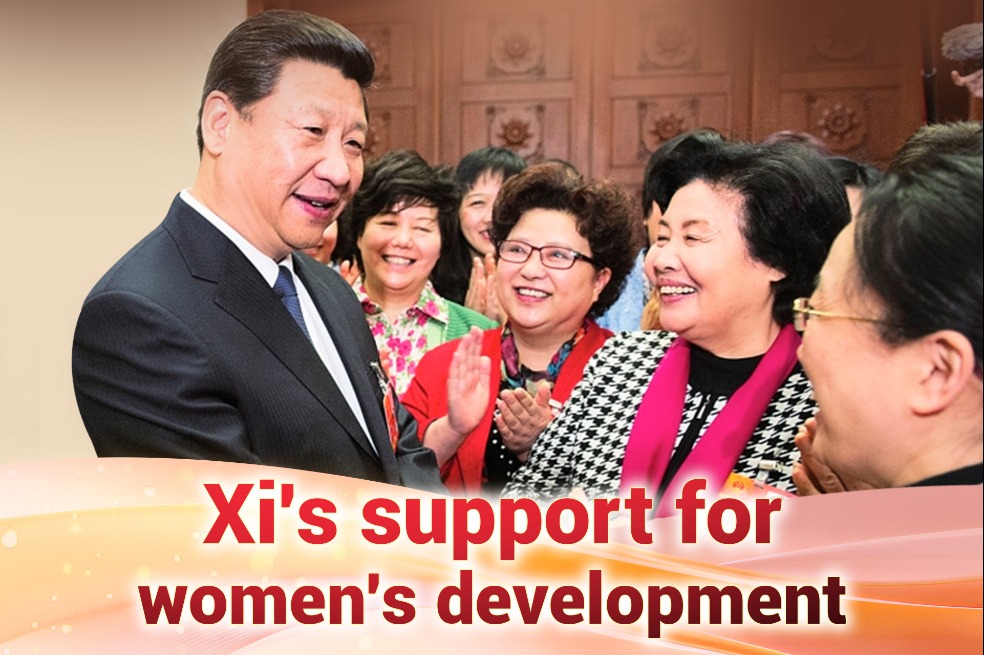China becomes global hub for two-way investment
Nation taking on dual role in world economy — as magnet for foreign enterprises and increasingly influential outbound investor


The energy sector tells a similar story.
Wang Pengcheng, president of Hithium Energy Storage Technology Co, said, "The global energy storage market is experiencing rapid growth, and Hithium Energy is building a global full-chain capability from materials and product systems to system integration and full-station services, providing customized integrated solutions for global customers." The company's shipments have grown at a compound annual rate of 167 percent over the past three years, with demand rising fast in the United States, Europe, and the Middle East.
Smooth two-way capital flows depend on a robust financial system that can provide not only funding, but also risk protection and efficiency for cross-border activities.
"Outbound investment always involves the movement of capital across borders, and financial institutions are now participating in more diverse ways," said Zhou Mi, a senior research fellow at the Chinese Academy of International Trade and Economic Cooperation.
Zhou outlined three avenues of support. "First, banks can provide direct financing — loans that help enterprises participate in overseas projects or place large orders. Second, risk-protection products such as investment insurance reduce uncertainty for firms abroad. Last, trade-related financing tools, like buyer's credit, can lower the costs of running international operations."
Zhou believes that services will only grow more localized and innovative. "Many Chinese and international banks are expanding their global presence, which allows them to provide on-the-ground services. At the same time, new tools — such as stablecoins and faster cross-border payment systems — are emerging to make capital flows more efficient," he said. "Of course, cross-market risks remain, and the key will be ensuring that financial capital and real-economy capital complement each other to drive innovation. That balance requires constant adjustments."
The trend was clear at this year's China International Fair for Investment and Trade last month, where banks introduced instant transaction platforms and insurers offered tailored risk products for projects in politically complex regions.
Liao of HSBC added that the Panda Bond market has become a vital channel for foreign companies raising capital in China. "Since 2005, the Panda Bond market had recorded an accumulated issuance size of over 1 trillion yuan ($140 billion) as of July. The ready availability of domestic fundraising tools reduces financing costs and accelerates the expansion of the footprint of multinational companies in China," Liao said. "It also helps optimize their asset-liability structures and improve overall capital allocation efficiency."
Finance is the bloodstream of two-way investment, but innovation is the heartbeat. Both inbound and outbound flows increasingly target high-tech fields, from artificial intelligence and robotics to green energy. That matches China's strategy of high-quality growth and the world's demand for greener, smarter solutions.
That perspective is increasingly shared by foreign executives, who point to China's blend of policy support, market demand and industrial supply chains as a foundation for technological progress.
Events such as CIFIT showcase two-way investment results. More than 1,100 cooperation projects, with a combined value of 644 billion yuan, were signed at the fair this year.
While China's dual role in global capital flows has already delivered results, challenges remain. Geopolitical frictions, divergent regulatory system, and rising protectionism all weigh on the investment outlook.
Even so, with its vast market, comprehensive supply chains, and growing financial and innovation ecosystems, China is well placed to deepen two-way cooperation.
lijing2009@chinadaily.com.cn
























